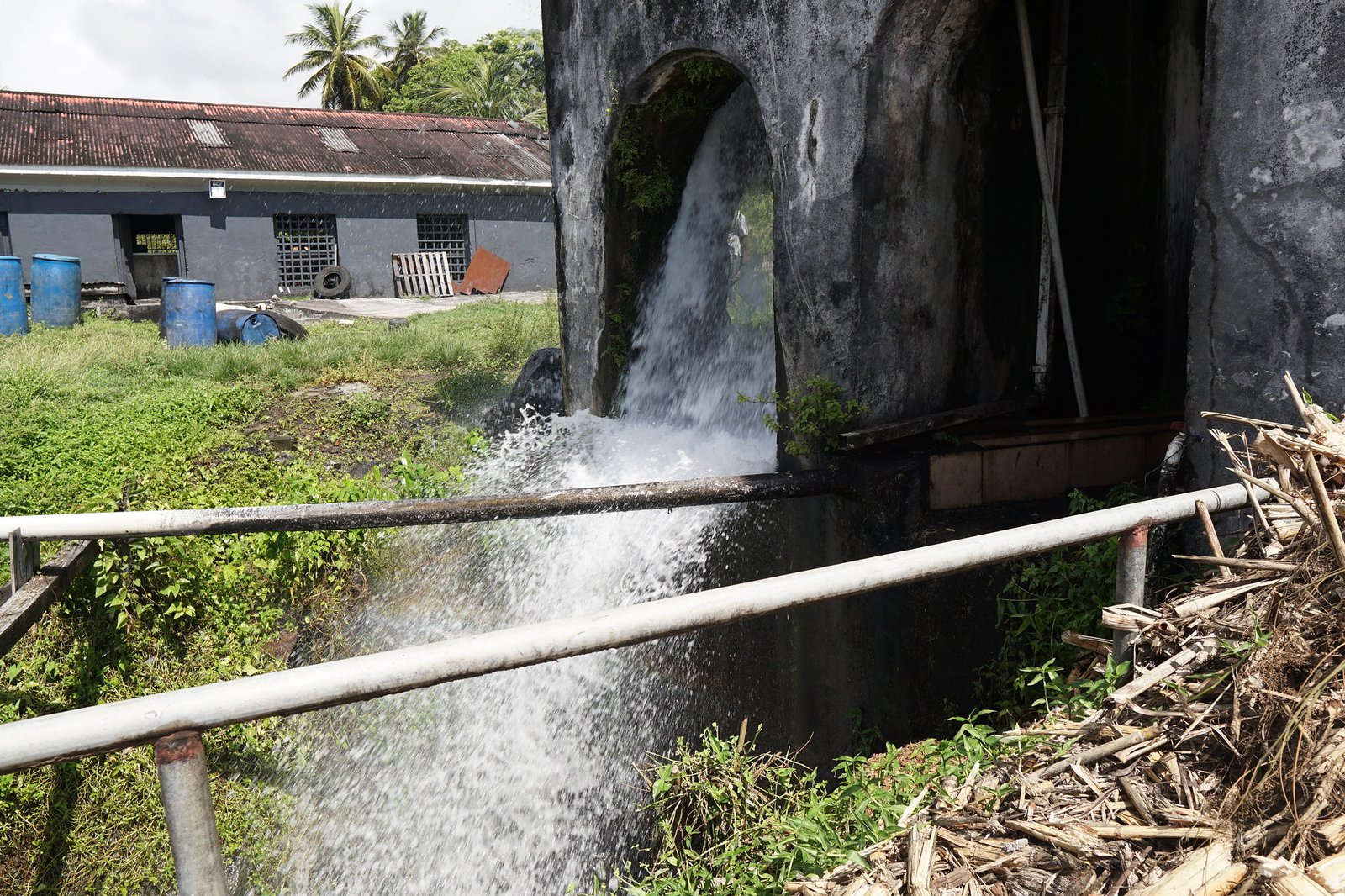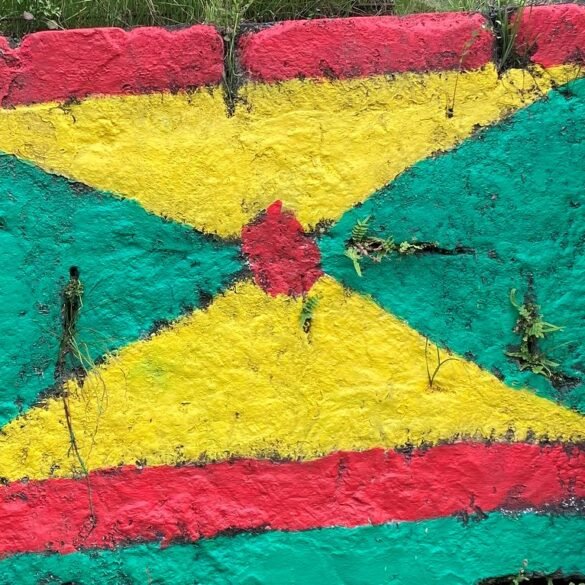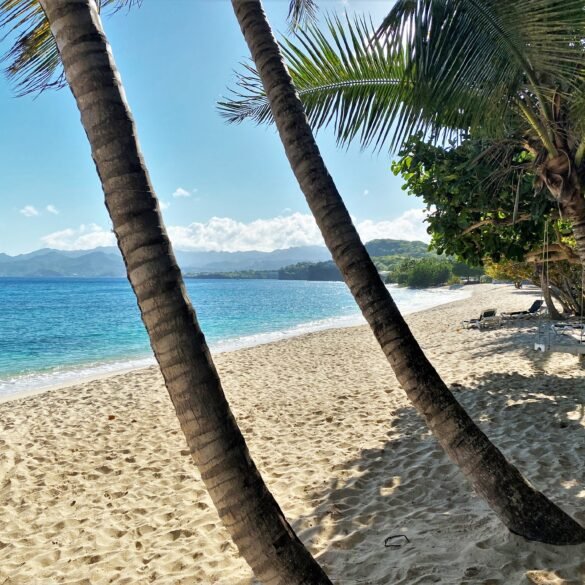Eastern Grenada surprised us big time. Many travellers often skip it because it lacks the beautiful beaches people tend to associate with Caribbean islands. And while it's true that you won't find heavenly beaches here, the region is home to some fantastic off-the-beaten-track activities. The best part is that all sights are located close to each other, within a 10-mile area.
One of the best places to visit in the east is the River Antoine Estate Rum Distillery. We'd been on distillery tours before and didn't expect much from this tour. How different can this distillery be from others we'd seen before? It turned out—very different. River Antoine has produced rum since 1785, and the production methods haven't changed much over the centuries. Equipment is still quite primitive, and most tasks are completed manually. Visiting it felt like traveling back in time.
Maybe because we were there in the morning and most people don't do rum tours this early—especially when you get to taste rum at the end of the tour—or perhaps this place doesn't receive a lot of tourists in general, but we had the place to ourselves. After paying the admission fees, we met our tour guide. He gave us a brief introduction and then took us to a working watermill for our first stop.
The roofless concrete building looked so rustic and worn out that we had no doubts we were touring the oldest rum distillery on the island. We then got closer and saw workers loading sugar cane collected from nearby fields onto the conveyor. Sugar cane was transported to a giant steel wheel, where it was crushed to facilitate juice extraction. The guide pointed out that the mill was powered by water diverted from the River Antoine, and hence, the name of the rum, Rivers. The extracted juice flowed via a series of funnels into the adjacent “boiling house”. Bagasse—leftovers from sugar cane extraction—was left to dry in the sun to be burned later to warm up the boilers of the boiling house. The watermill also had built-in tracks to help move bagasse away from the mill. We walked past mountains of dry bagasse into the boiling house.
Inside, the guide demonstrated how extracted sugar cane juice was boiled in large vats and manually transferred between them with a giant ladle to create syrup that would later undergo the fermentation and distillation process to make rum. The methods were quite simple, and the guide repeatedly boasted that the production was green and environmentally friendly.



As he walked us through different stages of rum production, the guide peppered us with interesting facts. For example, sugar cane collected during the dry season has a higher sugar concentration, and, as a result, rum made during the dry season is stronger. In the wet season, sugar cane contains more water, and rum is weaker. Understandably, local farmers—who are paid per volume—prefer the wet season as they can sell more juice and make more money.
This distillery doesn't export rum. Everything is sold and consumed locally. Thus, the only reasonable way for rum connoisseurs to get their hands on Rivers Rum is to hop on a plane and come to Grenada. Throughout the tour, we wondered why this distillery hadn't yet been consumed by corporate greed, forcing it to expand the facilities, upgrade the production methods, and start exporting rum to grow its profits. But the guide explained that owners were content with the volumes they were already producing. Also, chasing an increase in volume would have drastically changed the way the distillery operates, causing it to lose part of its identity.
The guide then walked us through the rest of the process, including manual bottling and packaging. The tour ended at a gift shop with a rum tasting. We were offered a 69 percent rum that burnt our mouths mercilessly, and a 75 percent rum that, despite containing more alcohol, was surprisingly very smooth. If we could buy a bottle to take home, we probably would've gone with a 75 percent, but that wasn't an option. To the guide's credit, he didn't try to make a sale and told us that, per TSA regulations, beverages containing over 70 percent alcohol were not allowed on planes due to their flammability. And that’s why the distillery even bothers to sell a 69 percent rum. We left the distillery empty-handed but were still buzzing through the morning after taking only tiny sips of Rivers Rum during the tasting.


Just a short drive from the distillery is another landmark: Belmont Estate. In one of the prior posts, Julia wrote about our visits to three chocolate farms in Grenada. Of all places, Belmont Estate had the best chocolate tour. The tour was comprehensive and covered all aspects of chocolate production: from a cacao bean to a chocolate bar. We’ve read that they also serve great lunch, but we didn't get to try it as we visited late in the day.
We spent the night in Grenville, the second-largest town in Grenada. Interestingly, to be the country's second-largest town, all you need is a population of just 2,400. The town is gritty and authentic. Like Sauteurs in the north, it's not geared toward tourism, and finding breakfast, for example, was quite a challenge. But Grenville makes a logical base for stopping overnight to take a break in sightseeing on the eastern coast.
A very cool place to visit in the east is Pearls Airport. Just a few miles north of Grenville, Pearls was the first airport on the island. It was captured during the invasion of Grenada in 1983. Today, the airstrip is abandoned since all planes now arrive at Maurice Bishop International Airport near St. George’s. We dropped by to look at the two dismantled Soviet planes that the U.S. seized and disabled at the beginning of the invasion. Mysteriously, an An-26 of the Cuban Airlines arrived in Grenada just the day before the invasion. The other plane, an An-2, was a gift from the Soviet Union, ostensibly for agricultural spraying. We walked around the planes, snapped pictures, and then raced our rental car down the abandoned airstrip.


Just because there are no beautiful beaches in the east doesn't mean you can't take a quick dip. South of Grenville, you can visit and swim in the lovely Mt. Carmel waterfalls. We drove to the falls when the Caribbean midday heat started to get to us. We parked on the side of the road, paid a very symbolic entrance fee to the person who was collecting payments, and then took a short walk through the forest to the falls. While the waterfalls might not be the most impressive you'll see in your life, they are worth a quick stop to refresh.
Finally, because food options are very limited in this part of the island, we should probably mention some recommendations. After leaving Mt. Carmel Falls, we drove through Marquis, a colorful fishing village. Outside the village, as we turned a sharp corner on the main road, there was a family restaurant with a fitting name, Bumpy Corner Bar. The owner greeted us outside and served what can be described as a Grenadian comfort seafood meal. The dishes were simple but delicious and filling.
Overall, renting a car in Grenada and driving around the island for four days was a highlight of our stay. Discovering the less-visited north and east gave us a complete picture of this island nation and allowed us to fall in love with it and its people.


